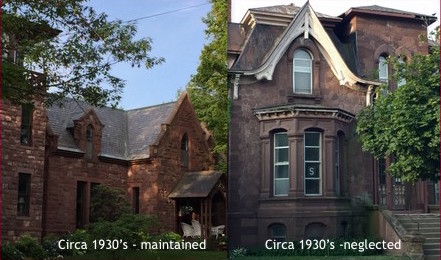
Reader Question: We will be buying our own home in the next year or so. There are numerous published articles about the hidden costs of home maintenance and caring for a home that offer conflicting information. Do you have any tips on taking care of a home?
Monty’s Answer: Taking good care of a home offers a lot of satisfaction, a sense of accomplishment, and future value when you have good information. One of the promotional tactics many businesses employ today is called “ native advertising.” Essentially, what native advertising does is to camouflage the ad, so it does not appear to be an ad at all. Many companies handle native advertising responsibly in constructing an article about their product, but some will dramatize (or downplay) the care and maintenance required for their product to position it in a more favorable light. Conduct an internet search for “native advertising” to learn more.
Examples of native advertising
- Tables that provide estimates in percentages on the average returns on your investments in improvements such as a total kitchen remodel, updating your bathrooms, new windows, and many other components are suspect.
- Articles suggesting that scores of homeowners are investing in their component may be puffery. These pieces want to inspire the idea that if everyone is remodeling their kitchen, for example, it must be a good idea; you should do it too.
- Statements that rely on averages, generalizations, or consumer surveys conducted by the companies named in the article. For example, a sentence such as “ According to a study carried out by XYZ company, the typical cost of a remodeled bathroom is $22,000, and averages an eighteen percent return on resale.” The statement may lead a reader to believe it is a fact when it is a native ad. Averages and projected returns on investing in specific components are not a reliable indicator of what may happen at your house.
The hidden costs of home ownership?
Understanding a home’s components and efficient planning eliminates hidden costs. Knowing how a home works before you buy one is a critical detail often overlooked by homebuyers. There can be surprises, but the surprise is related to the timing rather than the event.
Every appliance and component is going to fail. It is just a matter of time. Prepare yourself for those events by identifying the life expectancy, taking care of the equipment and having a reserve that begins the day you close and is funded every month after that.
Use the water heater as an example of how to implement the contingency fund. If you bought a new home and the expected life of the $500 water heater is 12 years, here is the math: $500 divided by 144 months equals $3.47 per month into the fund. You make a list of every component in your home, determine the average life expectancy and divide the months into the cost on each item to reach a total amount that is set aside each month.
The procedure for a pre-owned home
Using the water heater as an example on a 30-year-old home with a water heater ten years into a twelve year expected life, plan to invest $500 in 24 months, or $20.00 per month into the reserve fund until you reach $500. When it fails, and you install a new one adjust the monthly reserve down to $3.47.
Reserve fund Items
In a new home, some of the major components will not wear out. The poured concrete basement, wood frame, electrical wiring, plumbing pipes, sheet rock over the 2×4’s, and the plaster or thin coat covering on the sheet rock will not wear out during your ownership.
Most of the other components will wear out, discolor, or a new replacement trumps the repair costs. When they wear out depends on the climate, the care, the use, and the quality of the component. These components include the roof shingles, the furnace, the water heater, all appliances, floor coverings, and many others. Here is a link to a list of life expectancy of home components by interNACHI(National Association of Certified Home Inspectors that offers a list of life expectancies.
The value of the component replacement model
By taking half-an-hour to determine when the elements in a pre-owned home are likely to fail, and calculating the reserve fund into your budget, you will not incur hidden surprises. This exercise explains why homes in good condition sell faster and for more money.


